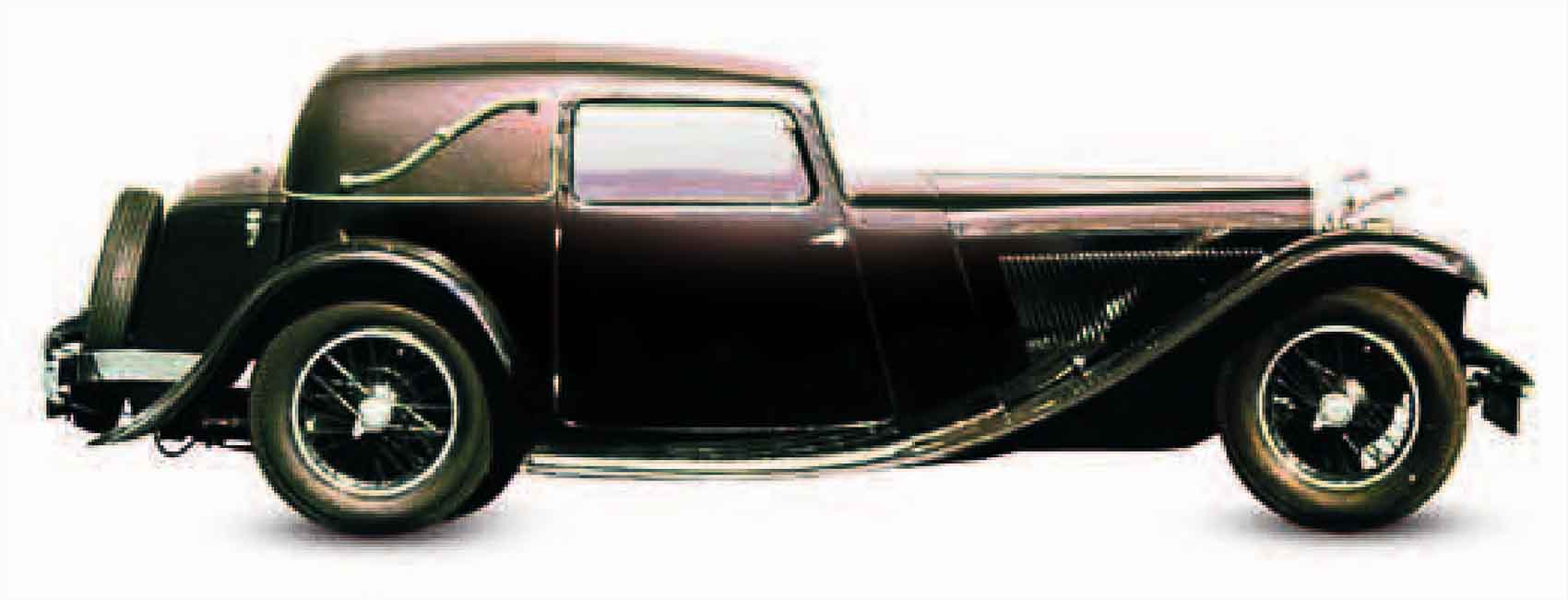
Powerful Sports Tourers
Despite the 1929 stock market crash that precipitated a worldwide recession, the 1930s saw small manufacturers continue to make large-engined sports tourers, with ever-increasing refinement as the global economy recovered. The widespread building of high-quality surfaced roads allowed wealthy drivers to cruise at hitherto unimagined speeds and travel hundreds of miles in a few hours, making journeys such as Paris to Monte Carlo or London to Edinburgh a comfortable reality.
Bentley 4-liter, 1931

| Origin | UK |
| Engine | 3,915 cc, straight-six |
| Top speed | 80 mph (129 km/h) |
The magnificent 8-liter and less-impressive 4-liter models were the swan songs of the independent Bentley company, which would shortly be taken over by Rolls-Royce.
Delahaye T135, 1935

| Origin | France |
| Engine | 3,227 cc, straight-six |
| Top speed | 100 mph (161 km/h) |
Named “Coupe des Alpes” after success in the challenging Alpine Rally, the T135 had a truck-derived engine, but it performed well on road and track-and looked fabulous.
Railton Eight, 1933

| Origin | UK |
| Engine | 4,010 cc, straight-six |
| Top speed | 90 mph (145 km/h) |
Reid Railton had the idea of mounting English sporting coachwork on the powerful U.S. Terraplane chassis. The result was the Eight—a fast sporting car available at a competitive price.
SS I, 1933

| Origin | UK |
| Engine | 2,552 cc, straight-six |
| Top speed | 75 mph (121 km/h) |
William Lyons initially built motorcycle sidecars, and then bodies for Austin Sevens. His first complete car was the SS 1 coupé of 1931. It was also available as a tourer from 1933.
Daimler LQ20 Special, 1934

| Origin | UK |
| Engine | 2,700 cc, straight-six |
| Top speed | 75 mph (121 km/h) |
Daimler’s owner-driver range had Lanchester-derived engines, fluid flywheel transmission, and servo brakes. Unlike the light Special tourer shown here, the cars were usually heavy-bodied sedans.
Lagonda 3-liter, 1933

| Origin | UK |
| Engine | 3,181 cc, straight-six |
| Top speed | 82 mph (132 km/h) |
Lagonda found its luxury tourers hard to sell in the recession, but its 3-liter model was still a fine sporting car that performed well. It offered pre-selector transmission as an option.
Mercedes-Benz 540K, 1936

| Origin | Germany |
| Engine | 5,401 cc, straight-eight |
| Top speed | 106 mph (171 km/h) |
Twice the price of a V16 Cadillac, the Mercedes-Benz 540K was a magnificent grand tourer with all-independent suspension, power brakes, and a supercharged engine that gave 180 bhp.
Hotchkiss AM80S, 1933

| Origin | France |
| Engine | 3,485 cc, straight-six |
| Top speed | 90 mph (145 km/h) |
Hotchkiss built fine sporting cars, of which the AM80S had the most powerful engine, at 100 bhp; later versions of this car triumphed twice in the Monte Carlo Rally.
Hotchkiss 680, 1936

| Origin | France |
| Engine | 3,015 cc, straight-six |
| Top speed | 85 mph (137 km/h) |
Hotchkiss introduced new streamlined bodies and synchromesh gears for its 1935 3-liter model, making a fine modern tourer. Hydraulic brakes featured briefly in 1936.
Alvis Speed 20, 1932

| Origin | UK |
| Engine | 2,511 cc, straight-six |
| Top speed | 89 mph (143 km/h) |
The Speed 20 series was Alvis’s attempt to rival Bentley’s upmarket models. These powerful three-carburetor cars were attractive and desirable sports tourers, rather than outright sports cars.
Alvis Speed 25, 1937

| Origin | UK |
| Engine | 3,571 cc, straight-six |
| Top speed | 97 mph (156 km/h) |
Alvis refined the Speed 20 with independent front suspension and an all-synchromesh transmission. It then added a larger engine and servo brakes to create this Speed 25.
Jensen S-type, 1937

| Origin | UK |
| Engine | 3,622 cc, V8 |
| Top speed | 81 mph (130 km/h) |
The S-type was the first car made by brothers Alan and Richard Jensen, who began as coachbuilders. They offered it as a drophead coupé, sedan, or tourer, and with a 2.2-liter engine option.
Triumph Dolomite Roadster, 1938

| Origin | UK |
| Engine | 1,991 cc, straight-six |
| Top speed | 80 mph (129 km/h) |
With its three-carburetor engine and waterfall grille, the Walter Belgrove-designed Dolomite was a striking car. Accommodation was three seats abreast in the front, and two-seats stored behind
Pelage D6-75, 1938

| Origin | France |
| Engine | 2,998 cc, straight-six |
| Top speed | 95 mph (153 km/h) |
Despite near bankruptcy and a takeover by Delahaye in 1935, Delage continued making superb sporting cars throughout the 1930s. This replica TT version is more sporty than most D6-75s.
It is a quote. The Definitive Visual History Of The Automobile 2011




